The best camping gear helps ensure a safe and enjoyable outdoor experience. Recreational activities in nature require effective preparation, with camping gear helping to fulfill basic needs. These items additionally enhance your overall experience by emboldening the spirit of adventure. Tools like tents, rain gear, and a traditional map and compass instill confidence and independence while you’re out in the wilderness, as they promote competency without forsaking practicality or safety.

Camping gear is the equipment you bring along to accommodate an outdoor experience. How you outfit your gear depends on the experience and your camping style. Generally, however, these are items you should always include alongside consumables and bare essentials.
Gear of this type is typically compact and easy to transport. Outdoor brands additionally provide various options, some specialized, while standard retailers are sufficient for basic items. Going without these selections not only makes basic camping difficult, but it diminishes the overall experience. Camping is about embracing nature, which is best done with the right tools and foresight.
Below, we cover the following eleven must-have camping gear, their benefits, and the difficulties of going without.
- Camping blankets: Insulating outdoor accessories that provide you with warmth and protection against the elements. Comes in a variety of sizes.
- Water bottles: Basic but essential containers to carry clean drinking water during your outdoor activities.
- Firestarter: Tools that help you safely ignite fires, oftentimes in difficult weather conditions.
- Survival knife: A versatile, durable knife intended for outdoor survival tasks.
- First aid kit: A collection of supplies for emergency medical treatment.
- Tent: Essential shelter for traditional camping. It’s used for sleeping and protection from the weather while outdoors.
- Map and compass: Traditional navigational tools. These items should be brought along in case electric solutions fail you.
- Rain gear: Clothing and accessories designed to keep you dry in wet weather. Packing these items ensures you’re able to travel and safely set up camp even in seasonal showers.
- Toilet paper: A vital hygiene product. You shouldn’t neglect to bring this item as local amenities are not always guaranteed. Paired with good hygiene practices, it also helps stave off infections and contamination.
- Flashlight: A portable source of illumination. You should always bring a flashlight as well as a backup method to power it (batteries or charging port) in case of nocturnal emergencies or travel.
- Camping stove: A portable device used for cooking food outdoors. These stoves use various types of fuel, are convenient to use, and are a safer alternative to campfire cooking.
1. Camping blankets
Camping blankets are outdoor accessories that keep you warm and comfortable. They’re essential to camping gear because of their insulating, water-resistant, and sometimes even fire-retardant materials that safeguard you from the elements. Other benefits extend beyond fabrics. For instance, camping blankets are lightweight and easy to pack, minimizing any concerns about storage. They additionally come in a variety of sizes with different temperature ratings. You’ll know the minimum temperature at which they will keep you warm, and what size to purchase if you’re adventuring solo or intend to huddle up by the fire with others.
View in gallery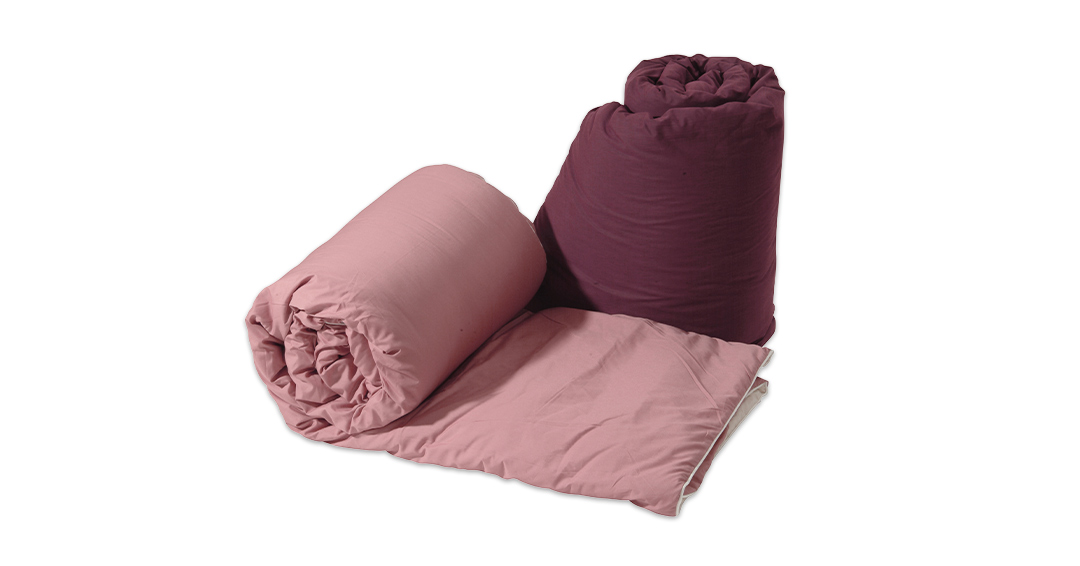
Going without these items means going without an extra layer of comfort to your outdoor experience. In extreme cases, the blankets are even essential for survival camping. They offer protection from the cold, damp, and wind, and are indispensable for maintaining body heat. Brands like Kammok, Rumpl, and Yeti provide high-quality options that cater to these needs, offering both practicality and comfort for any camping scenario.
2. Water bottles
Water bottles are basic but indispensable camping tools. They ensure you have access to clean drinking water at all times, which is especially key if your outdoor experience doesn’t have immediate amenities or involves strenuous excursions like hiking. It’s important to buy a bottle made of the right materials such as stainless steel or aluminum for their durability. Such bottles also provide effective insulation to keep your water cool (or warm) for extended periods, carry enough to hydrate throughout the day, and occasionally offer features like built-in filters if water quality is a concern. Yeti and Hydro Flask are two high-rated brands that meet these needs, specializing in long-term use, while brands like Waatr provide high-tech options like UV-powered filtration.
View in gallery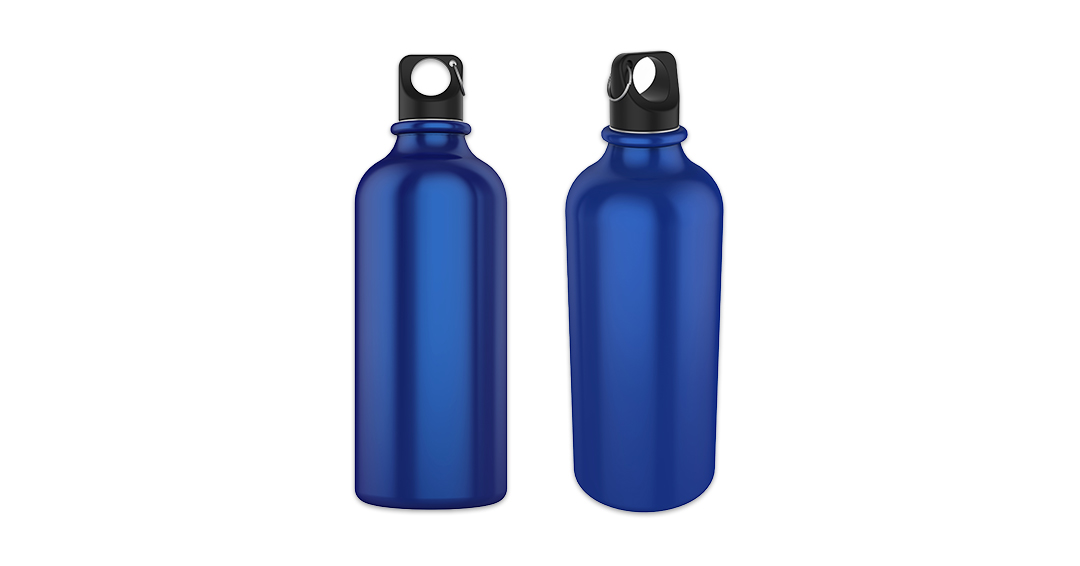
Camping without a reliable water bottle is potentially hazardous. Lacking a portable source of clean water leaves you vulnerable to heatstroke, dehydration, impaired performance, and contamination risks. It is especially imperative for surviving the outdoors if you choose to camp remotely or become lost. A durable water bottle marks the difference between staying hydrated or risking your health until you’re able to find a clean source or assistance.
3. Firestarter
Firestarters are camping and survival tools you use to safely ignite fires. It’s an essential aspect of many camping or outdoor endeavors, providing a means for warmth and cooking. There are several types of firestarters, each with its advantages and use cases. For instance, matches are traditional and straightforward, ideal for dry conditions but may fail in wet or windy weather. Disposable lighters offer convenience and reliability, with a higher success rate in damp conditions but are limited by fuel capacity. Be selective with brands as there are many tools available, ranging from the ferrocerium rods of Wolf and Grizzly to REI’s natural tinder options.
View in gallery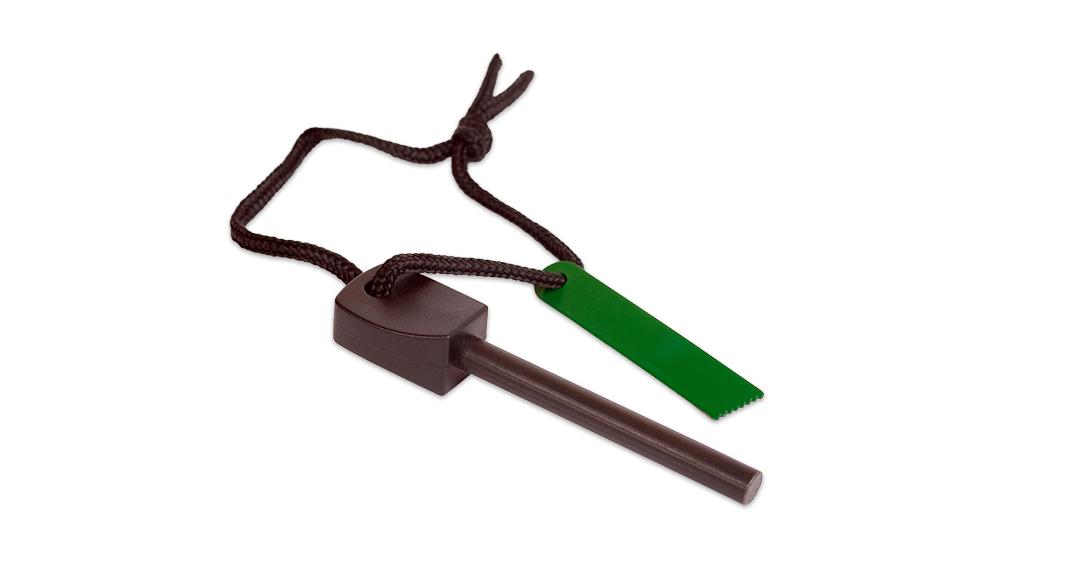
The advantages of a high-quality firestarter include reliability under various weather conditions, ease of use, and compactness. You should always be cautious with this item, however, as misuse leads to unintended fires or injuries. Additionally, always follow campground or forest guidelines and basic outdoor safety to prevent accidents. Going without this item limits your options for cooking. This is especially crucial if it’s part of a survival kit, with firestarters being essential for not only cooking but also staying warm, boiling water for purification, and signaling for help.
4. Survival knife
Survival knives are both outdoor and tactical cutting tools. They offer versatility due to their build, helping you to prepare food, build shelters, and more. Outside of their versatility, tactical items like survival knives tend to be durable, lightweight, and easy to maintain. They come in a variety of designs specialized or applicable for camping. Esteemed knife manufacturers like Benchmade provide outdoor and tactical selections, both of which are suitable camping gear depending on specifications. That said, be mindful of usage as improper knife safety leads to accidents and injuries—especially in outdoor situations where aid may be limited.
View in gallery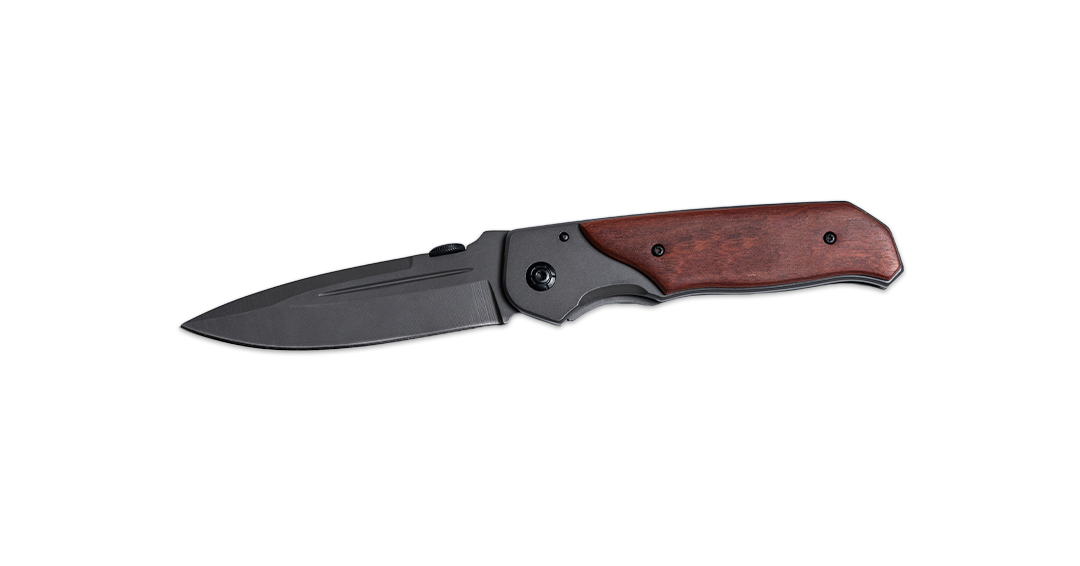
Neglecting to pack a survival knife means going without certain camping activities. For instance, you’ll be unable to shave wood for tinder or create makeshift tools if your outdoor venture requires more hands-on effort. These knives are even vital for basic survival. In severe situations, they’re helpful for self-defense and act as a protective, tactical tool to navigate unexpected challenges and perform essential tasks in the wilderness.
5. First aid kit
First aid kits are fundamental camping gear because they ensure preparedness. First aid kits provide supplies like adhesive bandages, sterile gauze pads, antiseptic wipes, and antibiotic ointment. These items allow you to address minor injuries or ailments, effectively responding to accidents and reducing your risk of infection while outdoors. Furthermore, first aid kits provide peace of mind while you camp. They’re a protective measure and ensure you’re equipped to handle disasters until further medical help can be obtained. As a result, we don’t recommend camping without a first aid kit.
View in gallery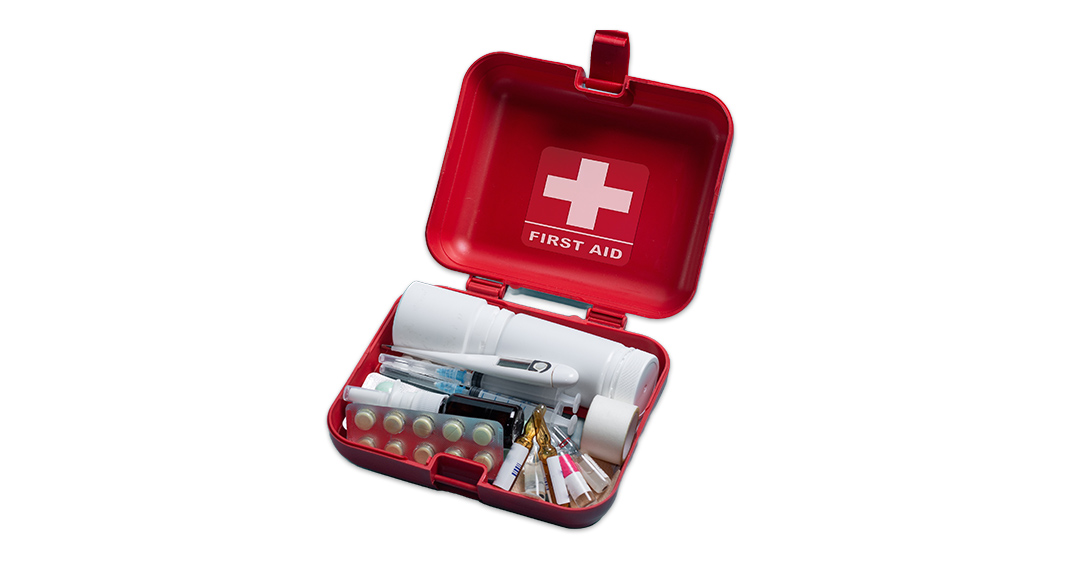
Furthermore, the commonality of camping encourages safety. The Dryt’s 2023 Camping Report reports there are 80 million campers in the United States. Moreover, there were 7.2 million first-time campers in 2022. This indicates a significant portion of the population enjoys braving the outdoors in some capacity, which necessitates appropriate safety even in locations with amenities. First aid kits are often the first response in case of accidents. They’re even pivotal survival scenarios as they mark the difference between a minor injury and a life-threatening situation.
6. Tent
Tents are a key element of most camping excursions. They provide shelter, allowing you to sleep safely, store gear, and stay dry and warm against the elements. Not all camping activities call for a tent, as you might choose to stay in an RV or camper van. However, if you choose a more traditional outdoor venture, tents are a must. The best camping tents are easy to put together and transport, with distinguished brands like The North Face and REI offering privacy, comfort, and varying sizes to accommodate two or more campers.
View in gallery
Camping without a tent means you’ll need to choose another means of shelter while outdoors. Many recreational areas accommodate RVs or cabins, yet these options lack the immersive nature experience and flexibility offered by tent camping, limiting your choice of locations and interactions with the environment. Likewise, you can’t forgo a tent if you want to camp in more remote areas. This risks your safety as tents protect you against the elements, which is key to basic survival.
7. Map and compass
Maps and compasses are basic but important navigation tools for camping. Most campers rely on digital solutions, namely GPS devices or smartphone apps. However, these options fail in the wilderness due to battery depletion, poor signal, or damage. Knowing how to use a traditional map and compass is consequently indispensable. They help you navigate unfamiliar terrain, plan treks in the wild, identify landmarks, and generally ensure you know your way about while outdoors. They additionally provide a sense of self-efficiency and preparedness, instilling confidence in your skills and identity as an outdoor enthusiast or camper, even in more remote situations.
View in gallery
Overall, we don’t recommend leaving home without a traditional map and compass. Many areas like national parks provide maps and nearby assistance in case you do get lost, but that isn’t always an option. Moreover, digital options fail as we previously mentioned. The best camping gear always accommodates maps and compasses as they ensure your safety in survival situations. You also don’t need to purchase a high-quality option. As long as you know how to use them, a standard compass and map of the area will suffice.
8. Rain gear
Rain gear acts as a protective layer against the elements. Rain gear includes waterproof or water-resistant jackets, ponchos, rain suits, gaiters, and footwear. These items help you stay dry and warm during downpours, staving off ill effects like hypothermia. Other benefits include their durability and material; they take up little space in your pack and are generally made of long-lasting but breathable, lightweight materials like nylon. Furthermore, brands like Patagonia, The North Face, and Columbia offer high-quality rain gear suitable for camping or other activities. Be sure to select waterproof over water-resistant items as the latter is less likely to hold up against heavy rain.
View in gallery
Additionally, camping should be avoided if severe weather is expected. Rain also isn’t a likelihood for every outdoor excursion, but circumstances change, however, so rain gear is a practical addition. Going without leaves you susceptible to the cold and wet, which is both uncomfortable and dangerous to your health. In survival circumstances, camping rain gear becomes tactical gear; it makes a significant difference in maintaining body heat and overall well-being during adverse weather conditions.
9. Toilet paper
Toilet paper is another basic item for your camping gear, critical for personal hygiene in the wilderness. It also reduces the risk of infections and discomfort while braving the outdoors. Many parks and camping grounds come with amenities like bathrooms, as do RVs. However, toilet paper isn’t always guaranteed so it’s key that you bring your own. Another benefit is that toilet paper avoids contamination while preparing foodstuff, combined with proper hand washing and disposal.
View in gallery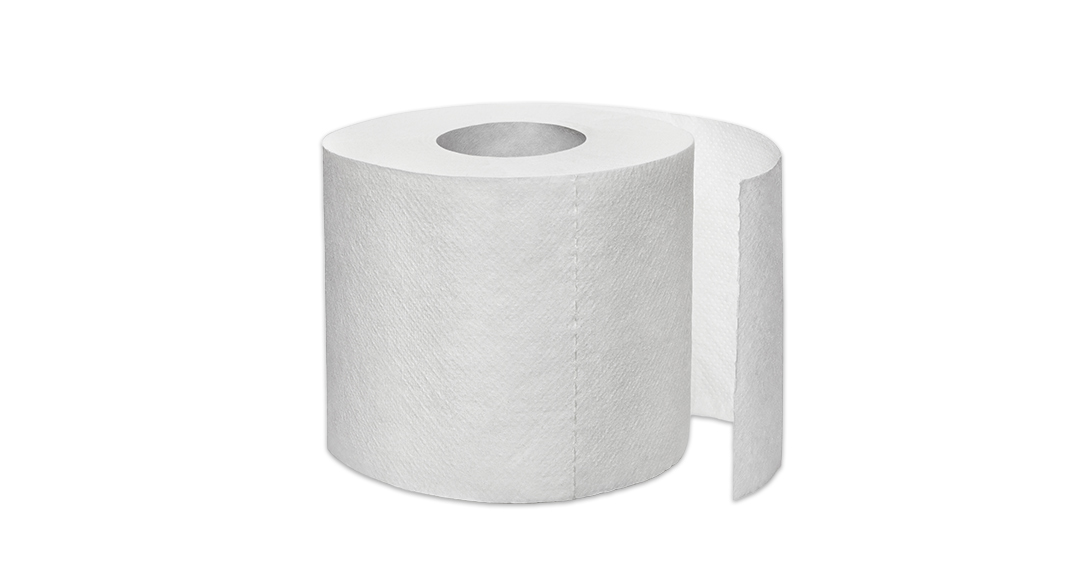
A few brands even offer toilet paper specifically designed for camping, such as Coghlan’s. These items are biodegradable, environmentally friendly, and designed to break down quickly in nature, minimizing the impact on your surroundings. Camping without these items is unsanitary, uncomfortable, and potentially hazardous to your health and wildlife. While not often characterized as a survival item, toilet paper is also a helpful item in more serious or remote situations, supporting basic cleanliness so you may focus on other priorities.
10. Flashlight
Flashlights are fundamental camping tools that provide illumination. They should be part of any kit if you intend to stay overnight as they’ll help you navigate the dark, particularly during any nocturnal emergencies. Other benefits of a camping flashlight include signaling for help or deterring wildlife. The former may be necessary if your camper van or RV breaks down in the middle of the night, while the latter helps scare off animals like raccoons or bears.
View in gallery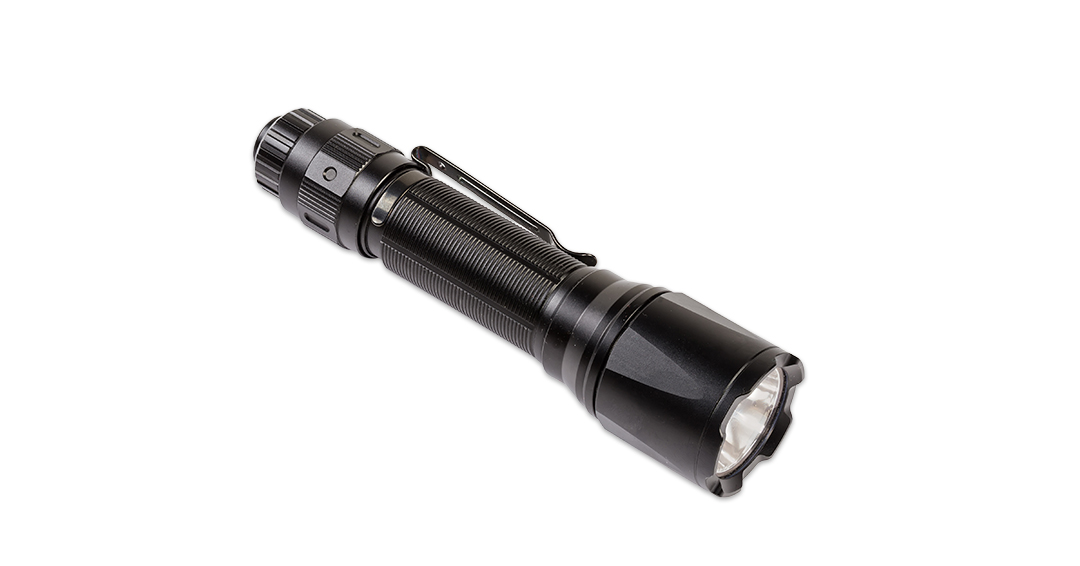
Without a flashlight (or another immediate source of illumination), you are left vulnerable to the dark. This increases the risk of accidents and makes night-time navigation tedious, even dangerous. Furthermore, basic flashlights are often inexpensive. Some outdoor brands like REI offer high-quality items in a range of sizes to maximize conveniences, but a standard, store-bought flashlight is usually sufficient if you’re going on a short, casual trip. That said, opt for heavy-duty items if you intend to camp more remotely. Specially designed survival or tactical flashlights like Nitecore’s offerings last significantly longer and hold up against hazards like rain or ice.
11. Camping stove
Camping stoves are a type of equipment that enables safe, reliable outdoor cooking. These stoves prioritize convenience due to their design, which offers easy setup, portability, consistent heat, and efficient fuel use. They’re also a safer alternative to campfire cooking, preventing burns and wildfires. There are a variety of stoves available, with notable names like Camp Chef and Coleman valued for their reliability and versatility among outdoor enthusiasts. Other benefits of a camping stove include reduced cooking time and the ability to make food in various weather conditions. Additionally, the stoves come in a variety of sizes and fuel types to cater to different outdoor activities and group sizes.
View in gallery
You may opt to camp somewhere with facilities, such as areas with shared kitchens or fire pits. However, having your own portable stove provides flexibility and the assurance of being able to prepare meals whenever needed. Without one, you lose out on a unique outdoor experience. Moreover, other options like open fires may be illegal while RV accommodations may be insufficient or unsatisfactory. Stoves are additionally helpful for survival camping as it means you don’t have to solely rely on firewood or weather conditions. Moreover, cooking is more convenient and safer for long-term outdoor endeavors.
Why is camping gear important?
Camping gear is essential because it provides you with the necessary equipment for a safe and enjoyable outdoor excursion. Not all forms of camping require significant supplies. However, it’s important to prepare the gear we previously discussed due to the unpredictable nature of the outdoors. Relying on amenities or assistance isn’t always guaranteed, much less practical in areas where they might be scarce. Additionally, well-stocked camping gear fosters a spirit of independence and emboldens your identity as an outdoor person. You’ll get a more genuine and safer experience with the proper gear.
Moreover, the items fulfill basic needs the wild cannot readily or reasonably provide, even if you’re an expert survivalist. They protect against the elements and water or food contamination, ensure safe navigation at night or in unknown terrain, and provide aid for basic injuries. Quality gear also minimizes the environmental impact of camping, allowing you to enjoy the outdoors responsibly. In short, camping gear is vital because it improves and appropriately prepares you for your outdoor experience.
How should you prepare your gear for camping?
There are various methods of preparation, including the following steps.
- Buy the right necessities: Not every camping experience is the same, but some items are irreplaceable, even if you’re unlikely to use them. This includes but is not limited to first aid kits, water bottles, firestarters, rain gear, toilet paper, and flashlights with extra batteries or charging ports. Follow specialized guides if you intend to camp in a specific way.
- Test out new equipment: Familiarize yourself with any new gear before your trip. Practice setting up tents or using stoves to avoid confusion and delays at the campsite. Additionally, don’t be afraid to reach out to the brand or read reviews if you’re having trouble with a new piece of gear.
- Weather-proof your gear: Waterproof your tent and pack rain gear. Consider the forecast and pack camping stuff accordingly, ensuring you’re prepared for any weather conditions. If bad weather is likely, make a plan for how to shelter appropriately. Locate local amenities or ranger stations beforehand in case you need assistance.
- Pack efficiently: Use a checklist to pack essentials first, like a tent, sleeping gear, food preparation items, and clothing suitable for the weather. Outdoor brands prioritize easy portability, so opt for more compact items if space is an issue. Roll or compress items to save space.
- Inspect your equipment: Before departing, inspect all your camping gear for damage or wear. Ensure tents have all their components, and stoves work correctly. Additionally, make sure that sleeping bags are clean and insulating materials are intact. Store survival knives appropriately and bring backup items like batteries for flashlights.
How to prepare yourself for a camping trip?
Physically and mentally preparing yourself for a camping trip is as important as prepping your gear. Follow the steps below ahead of your trip.
- Research your destination: Your first step should be to research your destination. Many spots such as recreational areas in national parks are both popular and safe. Other locations are more remote and consequently come with more unknowns. Familiarize yourself with the camping site, available amenities, and the local wildlife. Study the rules and regulations to better respect them while you’re there.
- Consider environmental impact: Pack eco-friendly products and learn Leave No Trace principles to minimize your footprint. These principles mean respecting wildlife, disposing of waste properly, and leaving areas as you found them to preserve nature for future visitors.
- Plan your meals: Consider your nutritional needs and how you’ll be eating throughout the trip. Research if there are amenities nearby for cooking. If not, decide the best way to prepare and store your food. Decide whether it’s necessary to prepare your meals beforehand or if you need to bring a camping stove.
- First aid knowledge: Learn basic first aid and CPR. Knowing how to respond to common outdoor injuries or health issues is lifesaving, and ensures you’re mentally prepared to handle emergencies. Keep in mind that while first aid is helpful, major injuries or ailments must be handled with expert care.
- Pack other personal items: Beyond gear, remember to pack personal items like medications, sunscreen, insect repellent, and personal hygiene products like menstrual pads. Most of these items are not safe for the environment, so be sure to store them in your pack until you’re able to dispose of them appropriately.
- Emergency plan: Have a plan in case of emergencies. Know the nearest medical facility, and ensure someone knows your itinerary and expected return. If you have any medical issues, be sure to inform a loved one, a park ranger, or someone who can otherwise assist you quickly. Do not camp alone if it’s not safe for you to do so.
Can you equip your car with camping gear?
Yes, you can equip your car with camping gear. These kinds of items are portable or otherwise easy to pack, which simplifies travel. That said, it’s important to organize and store items appropriately. This means prioritizing space efficiency and accessibility. Use storage containers or car organizers to keep gear compact and secure while ensuring that essential items are easily reachable.
If your goal is car camping, be sure to select the right type of equipment. Choose a tent that can be easily attached to your vehicle. Invest in a portable stove that fits comfortably within your car’s storage space (though you should never cook in your car). Choose sleeping bags and pads that can be compactly stored. Additionally, consider the weight distribution of your car camping gear, as this can affect your vehicle’s balance and driving safety.
What are the best consumables for camping?
The best consumables for camping vary according to your needs, the length of your trip, and its activities. These items intend to be used up and aren’t readily replaceable, with the list below summarizing some must-haves.
- Food and beverages: Suitable foodstuffs are key for camping, even on shorter trips. This includes non-perishable food items like nuts, dried fruits, and canned goods. Hydration is also key, so stock up on plenty of water and electrolyte drinks. Purchase a durable water bottle to stay hydrated.
- Cooking supplies: If you plan on bringing a camping stove, you’ll also need items to help with cooking. This includes biodegradable soap, sponges, and disposable utensils for cooking and eating. Be sure to dispose of utensils appropriately and be mindful of waste as it might attract wildlife.
- Cleaning supplies: An important element of camping is leaving no trace behind. This means preparing consumable cleaning supplies, like eco-friendly cleaning wipes and trash bags. These items facilitate easy cleanup and responsible waste disposal, ensuring campsites remain pristine for future visitors.
- Batteries: Batteries are vital for flashlights, GPS devices, and other essential electronic gear. Many of these items have rechargeable equivalents, but that’s not always practical while outdoors. Be sure to also pack spares in case of emergencies.
- First aid: A well-stocked first aid kit including bandages, antiseptic wipes, and any personal medications. These items are crucial for addressing minor injuries, preventing infections, and ensuring health and safety in remote outdoor settings.
- Sunscreen: High SPF sunscreen is necessary to protect against sunburn during outdoor activities. Be sure to apply liberally and frequently to maintain effective protection throughout the day.
- Personal hygiene products: Many campgrounds offer amenities like showers, but this isn’t the standard in every location. Opt for biodegradable soap, toothpaste, and toilet paper to limit your impact on the environment. Use reusable items like menstrual cups or microfiber towels to further reduce waste and maintain personal cleanliness throughout your camping trip.
Are portable showers essential for camping?
No, portable showers are not essential for camping. They provide added comfort and convenience—especially during extended trips or in areas without shower facilities—but camping is fundamentally about adapting to nature. If being similarly adventurous is a key part of your personality or an experience you want to explore, then it’s possible to manage your hygiene without a shower. Opts for alternatives like sponge baths or biodegradable wipes, which adhere to the Leave No Trace principles. If you prefer portable showers, choose one that is lightweight, environmentally friendly, and easy to set up, ensuring it aligns with sustainable camping practices. Try not to bathe in natural water sources because they’re both unclean and likely to be contaminated by soaps and lotions, potentially harming local ecosystems.
Is camping part of healthy lifestyle activities?
Yes, camping can be part of healthy lifestyle activities. Camping is a recreational activity, which means if you enjoy it and it’s part of your personality, you can incorporate it into a healthy lifestyle. For example, common camping trip activities like hiking are a great form of exercise. It’s also a method of socializing and even stress relief if you enjoy interacting with other campers and spending time with nature. Even survival camping or laidback alternatives like glamping all have their place in a healthy lifestyle as long as they promote your mental and physical well-being.
Can I give camping gear as a gift for Father’s Day?
Yes, you can gift camping gear as a gift for Father’s Day if your dad is an outdoorsy person. For example, a kit with a high-quality survival knife can be a staple camping tool, offering versatility and durability. Alternatively, consider gifting a lightweight, compact tent or a new set of rain gear for fathers who love exploring off the beaten path. These gifts not only cater to his adventurous spirit but also enhance his camping experience with practicality and comfort.
